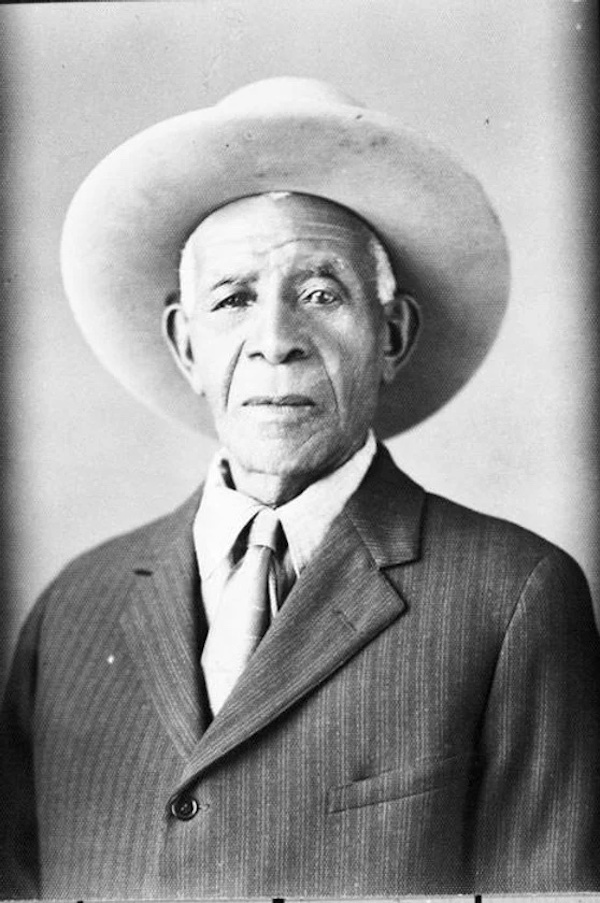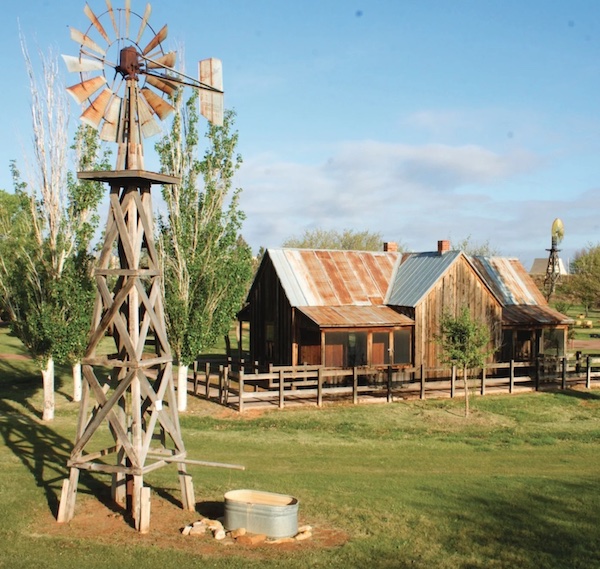Daniel Webster “80 John” Wallace was born into slavery in 1860, one year before the US Civil War broke out. Twenty-five years later, Wallace was buying land to start his own ranch in West Texas, ultimately building an estate that was estimated at more than $1 million by the time of his death in 1939. The grit and determination that allowed Wallace to always rise above his circumstances and become one of the most successful ranchers in West Texas earned him numerous accolades over his lifetime and beyond. That includes Wallace’s induction into the National Cowboy & Western Heritage Museum’s “Hall of Great Westerners” earlier this year.
Wallace’s mother, Mary Barber, was sold to the family of Josiah O’Daniel, located in coastal Victoria County on the Gulf of Mexico, just three months before he was born. While they were freed after the Civil War, Mary continued to work on the O’Daniel plantation. Raised on the plantation, Wallace never received any formal education beyond first grade but he did learn to rope and ride.
Wallace had no interest in farming, instead dreaming of becoming a cowboy, just like the ones working on the ranch that shared their stories with him. According to the tales, when Wallace was 15, he heard men talking about a large herd of cattle headed west. He knew the exact hour the drive would begin and every phase of the drive. So in the middle of the night, he snuck off and begged his way on to the cattle drive. The experience led to more cowboying jobs, ultimately landing him on the ranches of prominent cattleman Clay Mann in the late 1870s.
By this time, Wallace was known as “D.W.” and had established a reputation as a reliable and skilled cowboy. Mann also recognized D.W.’s intelligence and greater potential. The pair came up with a plan for D.W. to ultimately purchase his own cattle herd. Mann held back $25 of D.W.’s $30 paycheck, and in 1885, at age 25, Wallace purchased his first land.
This is also about the point that D.W. became “80 John.” Apparently, Clay Mann’s cattle brand was an 80, and he was known as “80 Clay” Mann. Wallace used the same brand, which quickly earned him the nickname “80 John. D.W. and Mann also developed an extremely close friendship.
As Wallace was learning the business side of ranching from Mann, he realized that he would need more than a first grade education to reach his goals. So in 1885, just as he was establishing his own enterprise, he also returned to school as a second grader. In just two years, he had mastered reading and writing. He also met Dee Owen, who became his wife in 1888.
When Mann passed away in 1889, D.W. continued helping Mrs. Mann, including training their two boys in cowboy skills and running the ranch. Meanwhile, the Wallace’s raised a family on D. W.’s land in Mitchell County, Texas, which he strategically expanded over the years, including two sections of future railroad land. He eventually placed around 1,200 of his 8,800 acres under cultivation and is said to be the first to introduce windmills to the region.
The windmills and the railroad helped his enterprise prosper but he nearly lost it all in the drought of 1894. Wallace was able to avert disaster only after a white neighbor signed a $10,000 note on his behalf. By the time oil was discovered on the ranch, Wallace was already one of the most successful ranchers in West Texas. The oil money, however, allowed them to build a home in Colorado City, Texas, so the children could go to school.
Upon his death in 1939 he left a debt-free estate valued at more than $1 million ($22 million in today’s dollars). One obituary called Wallace “one of the most progressive ranchers and farmers in Mitchell County, white or Negro.” The Wallaces are buried on the first section of land D.W. ever purchased. His descendants still operate the family ranch and live on 80 John’s land, though the original homestead house was donated and moved to the Texas Tech National Ranching Heritage Center as a tribute to Wallace’s vision and accomplishments. (Sources: National Cowboy Museum, Authentic Texas, DimeLibrary)







